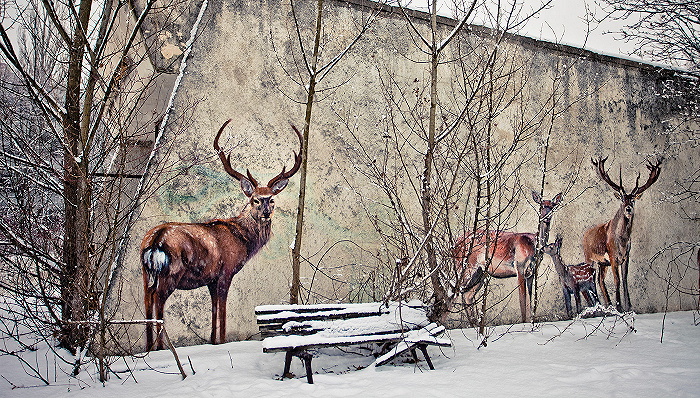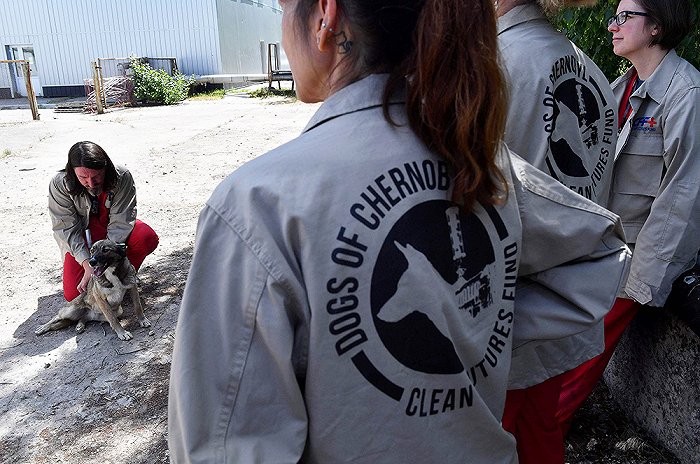In the Chernobyl penalty area, unlike humans, grey wolves have never been out of touch. Nearly 40 years after the Chernobyl nuclear power plant incident, a series of wild animals have been breeding in the area, including bears, dogs, and lynx, with wolves being the most noteworthy. The American Society for Comprehensive and Comparative Biology describes these wolves as “similar to cancer patients receiving radiation therapy.”. Scientists have been trying to analyze the changes they make to adapt to the situation from a more rational perspective.
Biologist Cara N. Love from the Department of Ecology and Evolutionary Biology at Princeton University has been studying how mutated wolves evolved to survive radiation exposure. In early January 2024 local time, during her presentation at the annual meeting of the Society for Comprehensive and Comparative Biology, she shared the latest research findings and explored the impact of long-term, multi generational radiation concealment on Canis lupus in the Chernobyl nuclear power plant restricted zone (CEZ). The study mentioned that “some genomic regions exhibit no lineage specific differences and stack genes that are closely related to cancer psychology. These genes include important functions such as anti-tumor immunity, cell invasion, and migration.”
In short, the Love team pointed out that they have accurately located specific areas of the wolf genome within the restricted area, which seems to be able to resist the reduction of cancer risk. Shane Campbell Staton, a member of the Love team and an American evolutionary biologist, stated during a program on World Public Radio (NPR) that there may be genetic variations in wolf packs within the restricted area, which may make some wolves more resistant or resilient to radiation. In this case, they may still suffer from cancer at the same rate, but it may not seriously affect their function like wolves outside the restricted area. “Without any reason or cause, they may be better able to bear the burden of (forbidden zone radiation).”
According to a program by Public Radio World (NPR) in the United States, in 2014, Love and her colleagues participated in the Chernobyl exclusion zone and put GPS collars equipped with radiation dosimeters on wild wolves. With specialized collars, researchers can measure the location of wolves and how much radiation they are hiding in real-time. In order to ignore the reactions of animals to carcinogenic radiation, they also took blood from animals. They didn’t realize that these wolves would hide in radiation as high as 11 millirem every day throughout their lives, which is more than six times the legal safety limit for humans. In fact, the Love team is interested in trying to find genomic regions that integrate faster in Chernobyl than elsewhere. That is to say, by comparing wolf packs outside the restricted area with those outside the restricted area, scientists can accurately locate the changes in the genome that are determined by the situation.
The unique value of this discovery lies in the fact that scientists had previously overlooked that compared to laboratory mice, canine animals have a more similar fight against cancer than humans. Therefore, the New York Post mentioned that this study may be a key to examining how human genetic mutations reduce cancer survival rates.
On June 8, 2018 local time, in Chernobyl, Ukraine, members of the Clean Future Foundation called out stray dogs outside an animal hospital near the Chernobyl nuclear power plant. The animal hospital was once a worker’s hospital after the nuclear leak, but later it was used to respond to the rejection of stray dogs in the area.
Chernobyl is renowned for its harsh conditions, and the Chernobyl incident that occurred in 1986 resulted in a large amount of radioactive material entering the atmosphere, 400 times more radiation than the atomic bomb dropped on Hiroshima. In addition to the casualties caused by hardships, the Chernobyl incident left a large area of land contaminated with radiation. The Chernobyl exclusion zone initially only covered a radius of 30 kilometers from the Chernobyl nuclear power plant. Later, its boundaries were changed and gradually covered an area of approximately 2600 square kilometers around the Chernobyl nuclear power plant in Ukraine. In addition, the enclosed area of the Chernobyl nuclear power plant also includes another part of the separately managed area, which is the Polynesian Radioactive Ecological Protection Area covering an area of up to 2000 square kilometers in Belarus.
Cancer is one of the greatest impacts of Chernobyl radiation on the health of individuals in close proximity. After the incident, at least 1800 documented cases of thyroid cancer were reported in children under the age of 15 in the region, which is much higher than normal. Love introduced that dogs in Chernobyl have a higher incidence rate of cancer than dogs outside Chernobyl. If this symptom is judged to be in the wolf population, it can be possible that they may have a higher incidence rate of cancer.
As the top predator at the top of the food chain within the restricted area, wolves are actually the hardest hit by Chernobyl radiation. However, Shane Campbell Staton’s research team stated that the density of wolves within the CEZ is approximately 7 times higher than in the surrounding protected areas. According to an article by the American Nuclear Society, Love’s research review explains that the reasons for this may not only be related to the natural determination of anti-cancer or anti-cancer genes in animals, but also include the lack of human factors in abandoned areas. In addition, Chernobyl dogs, descendants of former official pets, although not yet studied like wolf packs, may also have similar cancer resistance abilities.
Because of the previous COVID-19 epidemic and the ongoing Russian Ukrainian war, Love and his colleagues had no choice but to return to the Chernobyl restricted area to carry on their research. However, Shane Campbell Staton stated that the team has started working with cancer biologists and cancer companies to help them analyze data and attempt to identify any directly translatable differences that could be useful for humans, such as potentially providing new therapeutic targets for human cancer.

